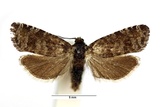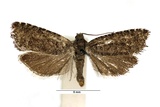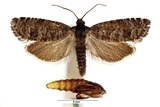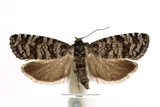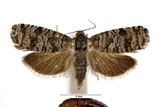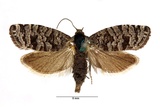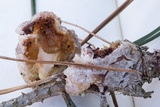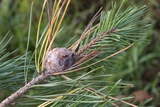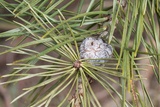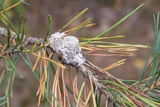Retinia resinella (Linnaeus, 1758) Species
Last modified: Dec. 9, 2023, 12:04 p.m.
A rather rare species in Belgium, with most observations in the Kempen area.
Details
- Classification
- Family: Tortricidae > Subfamily: Olethreutinae > Tribus: Eucosmini > Genus: Retinia > Species: Retinia resinella
- Vernacular names
- Harsbuilmot (NL), Pine Resin-gall Moth (EN), Kiefern-Harzgallenwickler (DE)
- First mention in Belgium
- De Sélys-Longchamps E. 1844. Énumération des insectes Lépidoptères de la Belgique. — Mémoires de la Société royale des Sciences de Liége 2: 1–35. On page 21.
- Status
-
Native
Distribution
Egg
The egg is pale yellow initially and turning dark yellow during development. Eggs are deposited singly on the young shoots, usually near a bud.
Bionomics
The larva has a two-year development period. It starts by boring into a small twig. This causes the host plant to exude resin, which then forms in winter a pea-sized resin gall, inhabited by a very young reddish caterpillar, in the branch tips usually at lower heights, where it hibernates.
Over the next summer the caterpillar will further grow and with it the resin gall, which will be the size of a smaller walnut by next winter. Inside the gall are two chambers, one for the caterpillar to live and grow in, and a second to deposit its feces.
The larva will pupate after the second overwintering and the pupa squeezes itself halfway out through a soft spot in the resin wall, so that the moth does not stick to the resin during hatching.
The adults are active at dusk and come to light.
Flight periods
The adults fly from mid-April towards June. Most observations during May.
Observed on
- Host plant (genera):
- Pinus
The larva lives on Pinus sylvestris, Pinus mugo and other Pinus sp.
Habitat
It inhabits pine woodland and heathland with scattered pine trees.
